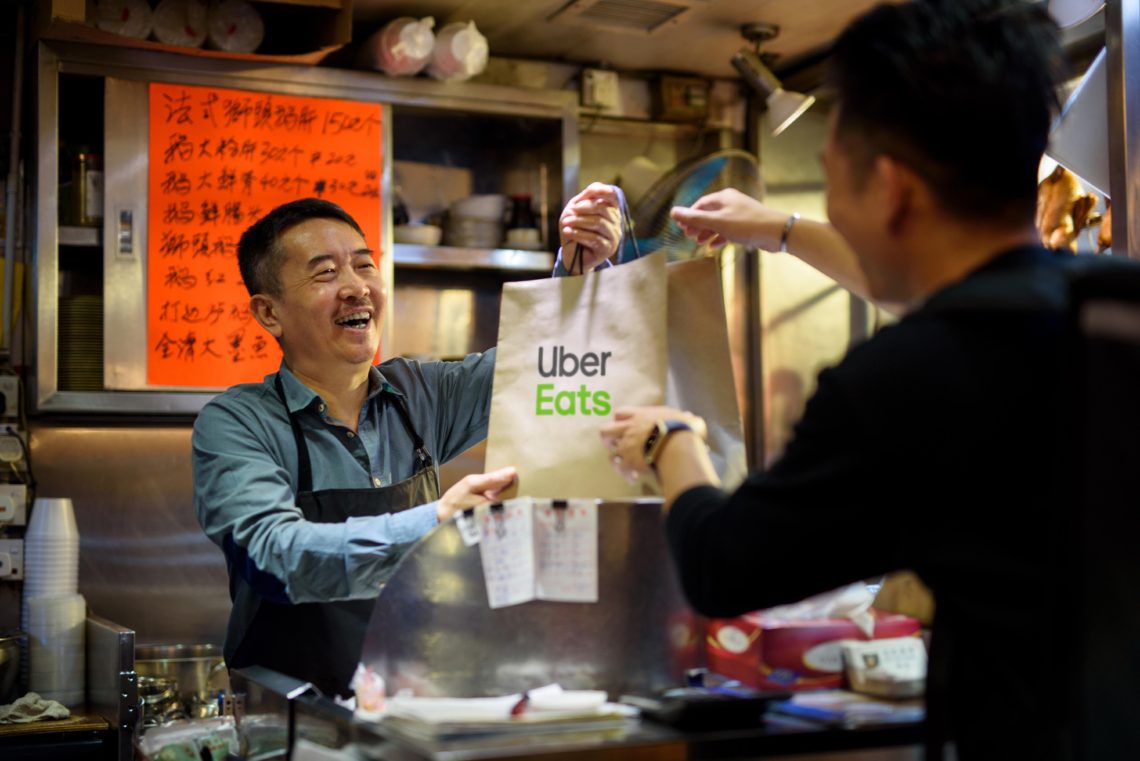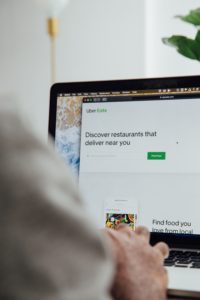
Ghost Kitchen – The end of traditional Restaurants?
Over the last 2,000 years, the basic idea of food is: I will come to your building, where I will give you something valuable and you will prepare me some food. Then I will eat it there, and maybe I'll even walk out and eat it. This concept hasn't changed very much, but the world has  changed. Anyone in the restaurant business knows the trends: People are as hungry as they’ve ever been, and they’re willing to spend money on food. But they’re also focused on convenience. Workers are happy to eat lunch at desks, and when they return home at the end of the day, they have endless streaming to entertain them during dinner. Dining out just doesn’t hold the appeal that it once did. Traditional restaurants, where you cook for a human coming to eat there, are not very well adapted to a delivery model.
changed. Anyone in the restaurant business knows the trends: People are as hungry as they’ve ever been, and they’re willing to spend money on food. But they’re also focused on convenience. Workers are happy to eat lunch at desks, and when they return home at the end of the day, they have endless streaming to entertain them during dinner. Dining out just doesn’t hold the appeal that it once did. Traditional restaurants, where you cook for a human coming to eat there, are not very well adapted to a delivery model.
For a long time now, there wasn’t anymore a big shift in the industry. I am watching the industry very closely. There are more changes to come then you would expect. One of them is Cloud or Dark Kitchens.
What is the Ghost Kitchen?
It may also be known as a delivery kitchen, dark kitchen, virtual kitchen, commissary kitchen or hidden kitchen. It is essentially WeWork for restaurant kitchens.
These ready-to-use commercial kitchens have no signage, storefront, no front-of-house staff and no sit-in tables. They are for businesses making food exclusively for delivery model. This basically involves setting up near areas that are likely to have a big demand for food delivery.
Positive aspects of Ghost kitchens:
+reduce rent and labor costs over a traditional brick-and-mortar location, while also more efficiently managing customers’ requirements for deliveries
+ instead of buying an expensive restaurant site on a heavily walked street, a cloud kitchen is developed in a cheaper, strategically locale place (an industrial district, perhaps), with dozens of kitchen stations that are individually rentable for short periods of time by chefs and restaurant proprietors

+ can expand their footprint into high-demand areas with minimal upfront investment and lower overhead
+ Virtual kitchens can also allow existing restaurants to experiment with bespoke menus and offer new items without impacting their existing brand. To reach customers, these businesses usually lean on transport infrastructure provided by the likes of Uber Eats, Deliveroo, Postmates, GrubHub, DoorDash, and Caviar.
+ The back end is mostly directly connected to many of its own suppliers. As menu items are changed, the system updates orders with suppliers. This approach gets even more powerful when it’s combined with the data it receives from delivery platforms, which allows the company to adjust menu items quickly, based on what is most popular
+ packaging is designed to keep food fresh and hot; menu items are chosen with the idea that they will not be consumed right away
How does the Ghost kitchens concept work?
So, for example, a KFC could pay for space inside a ghost kitchen – and then, when an order comes in via Seamless, Uber Eats or some other platform, the food is made there instead of at an actual KFC. Having a dedicated kitchen simply for delivery means food can be prepared far more efficiently. This means more of it, more deliveries and more profits.
The customer receives the same chicken strips, nuggets, and sides, but after eliminating the costs associated with a physical location, the company pays less to make them.
Who will succeed?
 Difficult to say yet. U.K.-based food delivery giant Deliveroo, which counts Amazon as a major investor, recently revealed that it now claims over 2200 virtual restaurant brands in the U.K. alone. A 150% increase to 2018. Deliveroo has operated delivery-only kitchens, called “editions,” since 2017.
Difficult to say yet. U.K.-based food delivery giant Deliveroo, which counts Amazon as a major investor, recently revealed that it now claims over 2200 virtual restaurant brands in the U.K. alone. A 150% increase to 2018. Deliveroo has operated delivery-only kitchens, called “editions,” since 2017.
As Uber struggles to cut losses across its business, Uber Eats now represents its fastest-growing unit, with a customer base of well over 90 million users and sales growth of 64% in the past year.
I clearly remember the day when Uber Eats was introduced in our restaurant. That’s only a few years ago, but it feels like Uber Eats was always around. Just a few restaurants had been participating back then, but you could feel the impact. There were days when we needed to switch off the system because we could barely handle all the orders.
Additional read:
McDonalds opens first dark kitchen (Link)
Investors, Retail Landlords Betting Big On Ghost Kitchens (Link)
Another Ghost kitchen provider raises millions (Link)
Conclusion
Dark / Cloud / Ghost kitchens, becoming more and more prevalent all over the world. They allow catering firms to produce a large number of orders from a commercial kitchen.
Thanks to apps like JustEat, UberEats and Deliveroo, the food delivery industry is growing rapidly, and dark kitchens are a way to keep up with demand. In London, kitchens have popped up in shipping containers under motorway bridges, and in other unusual locations, too.
Ghost Kitchen is build to maximize efficiency, with infrastructure and technology that helps food move from the kitchen to the customer. Ghost kitchens are still a relatively new concept, but the industry already features several fast-growing companies.
It’s all about spotting gaps in the market and they are doing it perfectly.
Ready for your order,
Dan Draper
Reading recommendation: Change is coming, no matter what (Link)





One Comment
Kitchens Centre
Great Content, Extremely informative and helpful. Keep up the Good work.